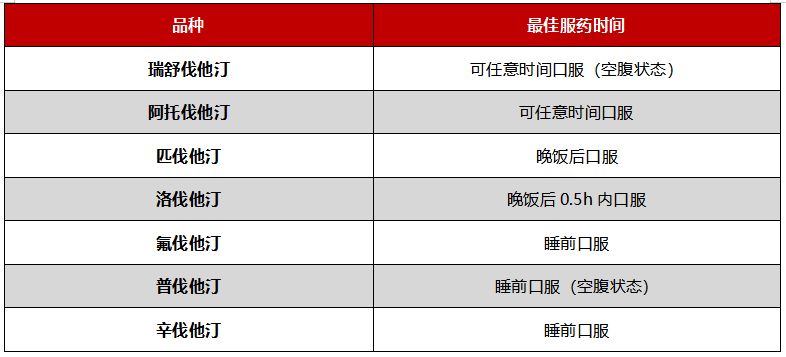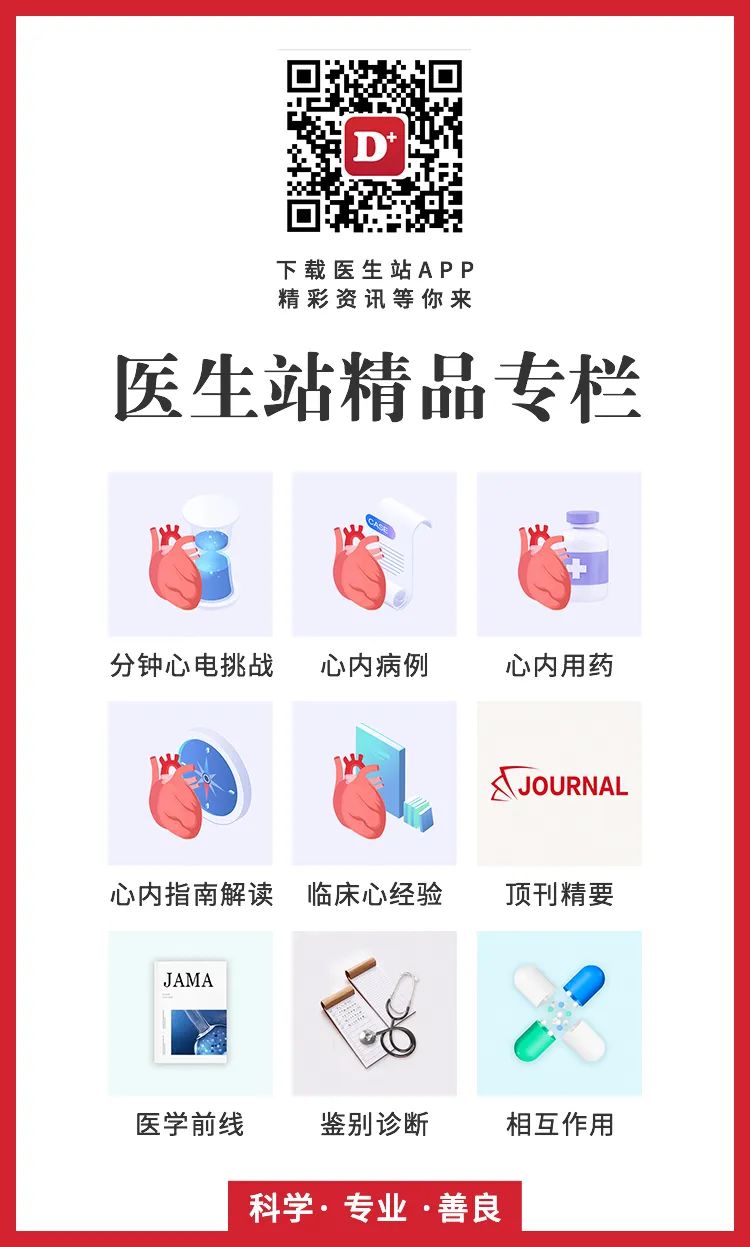What is the difference between 7 major categories, the effect of lipid -lowering effect and medication time?
Author:Cardiovascular Channel in the Time:2022.09.12
*For medical professionals for reference

What is the difference between statins?
HMG-COA restoration enzyme inhibitors) can inhibit cholesterol synthesis Speedenase HMG-COA, reduce cholesterol synthesis, and then regulate low-density lipoprotein (LDL) receptor on the surface of liver cells to accelerate serum LDL decomposition metabolism. Therefore, Betine can significantly reduce total serum cholesterol (TC), LDL-C and liposuoprotein-B (APO-B) level, which can also reduce the level of serum TG and mild HDL-C levels.
Its lipid -lowering effect and cardiovascular benefit have been repeatedly confirmed and fully affirmed. In the "China cholesterol education plan lipid -regulation treatment to reduce cardiovascular incident experts (2019)", it clearly lists the recommendation opinion of starting Jetine therapy:
1. Abnormal blood lipids are obviously affected by diet and other lifestyles. The treatment of the treatment of lifestyle is the basic measure of abnormal blood lipid intervention. Regardless of or not drug intervention, you must actively improve your lifestyle. Good lifestyles include adhering to healthy diet, regular exercise, staying away from tobacco, restricting wine and maintaining ideal weight. Lifetime intervention is a treatment measure for the best cost/benefit ratio and risk/benefit ratio.
2. For people who have not been diagnosed with arteriosclerosis cardiovascular disease (ASCVD) (except those who are LDL-C levels ≥4.9mmol/L), their LDL-C target values can be determined according to the risk level of cardiovascular disease. After positive treatment of sexual lifestyle changes, the LDL-C value is still not up to the standard. Considering the startup of Biting drugs.
3. Patients with diagnosis of ASCVD can be further divided into extremely high risk groups and ultra -high -risk groups.
(1) For patients with extremely high risks, LDL-C <1.8mmol/L (70mg/DL) can be required to initiate the treatment of statins on the basis of changes in lifestyle. /L (70mg/dl), it is recommended to use Yilizomo. If you still do not meet the standard, you can consider using a PCSK9 inhibitor. For patients who still cannot meet the standards, LDL-C is required to reduce ≥50%compared with the baseline value.
(2) For patients with ultra-high risk, LDL-C <1.4mmol/L (55mg/DL) can be required to start a lifetime drug treatment on the basis of changes in lifestyle. Jeon-categorian drugs are combined with Yijiemobati; if you use Ji-type drugs to combine the treatment of LDL-C for the treatment of LDL-C, it is still ≥1.4mmol/L (55mg/dl). It is recommended to add PCSK9 inhibitors. If the estimated Batin drugs are estimated to use Yibaliba to make the patient LDL-C meet the standards, it can also directly start the combination of Biting drugs and PCSK9 inhibitors. For patients who still cannot meet the standards, LDL-C requires LDL-C to reduce ≥50%compared with the baseline value.
4. For LDL-C levels ≥4.9mmol/L (190mg/dl), severe hypercholesteroids without ASCVD can be directly initiated by Biting drugs. If LDL-C is still ≥2.6mmol/L (≥100 mg/dl ), Can be combined with folding wheat cloth, such as LDL-C still does not meet the standards, can be combined with PCSK9 inhibitors.
5. When serum TG ≥ 1.7mmol/L (150mg/dl), the lifestyle should be actively improved and the patient's cardiovascular disease risk level should be actively evaluated. The first choice of Hisine drugs to meet the patient's LDL-C standard. If the LDL-C has reached the standard, the TG level is still light and moderate [2.3 ~ 5.6mmol/L (200 ~ 500 mg/dl)], you can use high-purity fish oil or Bate drugs on the basis Wait for the patient to meet the standards of HDL-C.
6. Patients with severe increased levels oftg, that is, fasting TG ≥ 5.6mmol/L (500mg/dl). In order to reduce the risk of acute pancreatitis, TG should be used as the main intervention target. After TG decreases to <5.6mmol/L/L, if the patient's cardiovascular disease risk is more or more critical, you can consider the addition of Hisine drugs. At this time Review blood lipid levels, liver enzymes and creatine kinase, and adjust the treatment plan according to the treatment reaction.
7. If the patient cannot tolerate any types and doses of the category and dosage, you can consider the application of the Yibaibu, and if necessary, the PCSK9 inhibitor can be used in conjunction.
8. For HDL-C <1.0mmol/L (40mg/DL), it advocates quitting smoking, reducing weight, and increasing exercise. It is not recommended to increase HDL-C through drug treatment.
Table 1 There are 7 varieties listed in China in my country [2]

According to the intensity of the effect, it can be divided into three categories. As a first -level prevention drug of ASCVD, the starting therapy dose is recommended low and medium -strength. ASCVD second -level prevention is recommended for medium -intensity. [3].
Table 2 The intensity of the role of his drug

Note: A daily dose can reduce LDL-C ≥ 50%; B daily daily dose can reduce LDL-C30%~ 50%; C daily daily dose can reduce LDL-C ≤ 30%.
Most of hisbine drugs (Louvas, Clintia, Fluanda, Pavida) are fat -soluble, Portvastatin and Ruhunzanda are water -soluble, while Atropine belongs to the double water double water Soluble. Compared with lipid soluble, water -soluble statins are not easy to use the lipid layer of the cell membrane, but the conveyor carrier of the hepatocyte surface can be selectively entered into hepatocytes. Therefore, water -solubleching can selectively inhibit liver cholesterol synthesis, while cholesterol synthesis in adrenal glands, gonads, hearts, and China's current brain is extremely low. In this way, the serum cholesterol level is effectively reduced, and the occurrence of adverse reactions of extrapatic tissue is avoided [4]. ≥75 -year -old patients with lipid regulation and the treatment standards can be preferred by hydrophotic drugs (Putacotin, Ruhunzanda) to reduce the possible impact on the liver and muscles [5].
Table 3 HMG-CoA restorease inhibitor pharmacokinetics comparison [5]
Table 3 shows that there are differences between the plasma clearance of different hertin drugs. The half-life of Luocevatin, Sippedine, Pucardine, and Fluandin is short, about 1-4h; The half-life of the Parer is greatly extended, with about 10h or more, respectively, 14H, 13-20H, and 11h, respectively. Different half -life leads to the difference in administration time.

HMG-COA restoration enzyme is acting. Just as many rhythmic physiological activities of the body, the activity of HMG-CoA restorease and the synthesis of cholesterol also have day and night rhythm. At noon, at noon (0: 00-3 in the morning (at 0: 00-3: 00) The highest time. Therefore, the short period of Hittin -like drugs is suitable for taking before bedtime, and Hisin -like drugs with longer half -life can be taken at any time within 1D [2].
But at the same time, it can be seen that food will affect the absorption of some drugs:
Putacatin suggested to avoid serving with food because the absorption rate can be reduced by 30%.
Rulyuvas avoids serving with food because the absorption rate will decrease by 20%.
Luozatin recommends that taking within 0.5h after dinner, because food can increase by 50%of the absorption rate.
Although the absorption rate of Parer is not affected by food, it has a significant liver and intestinal cycle through the intestinal absorption. It can be taken after dinner, so that the concentration of the medicine peak is just covered throughout the night.
Table 4 The best time to take lipids for liposuction
Note: The empty stomach is mostly 1h before eating and 2h after meals.

Regarding his category drugs, what else do you have in clinical work, come and leave a message to share!
references:
[1] Chinese cholesterol education plan lipid regulation treatment to reduce cardiovascular incident experts (2019) [J]. China Internal Medicine Magazine, 2020, 059 (001): 18-22.
[2] Xu Danhua, Wang Fei, Yan Wei. The comparative study of commonly used statins [J]. Modern Applied Pharmacy in China, 2018, 035 (007): 1112-1117.
[3] Chinese Medical Association. Blood lipid abnormal grassroots diagnosis and treatment guide (2019) [J]. Chinese general physician magazine, 2019, 018 (005): 406-416.
[4] Pei Baoxiang, Zhou Xiaoqing. Comparison of pharmacokinetics and safety comparison of cia metering fat regulatory drugs [J]. China New Medicine, 2004, 3 (1): 46-48.
[5] The Senior Medical Professional Committee of the Medical and Health Exchange Association of Cross-Straits of the Straits. ≥75-year-old elderly patients with blood lipid abnormal management [J]. China Cardiovascular Magazine, 2020 Vol. 253, 2020, 25 (3): 201- 209.
Where can I see more cardiovascular medication skills?
Come and see "Doctor Station APP"
Source of this article: Clinical Pharmacy Channel in the medical community

Author of this article: radish white Cai
Editor in charge: Peng Jianping Peng Sanmei
- END -
Major changes!The entry "14+7" is changed to "7+3"; why is it adjusted?Response → →
New Coronary Virus Pneumonia Prevention and Control Plan (Ninth Edition)Officially announced on the 28thThe plan is mainly made by the following four aspects:The first is to optimize and adjust risk
The seventh batch of national drug collection work was launched in early July

Original title: The seventh batch of national drug collection is intended to open ...